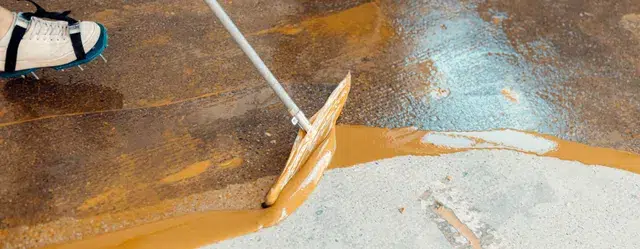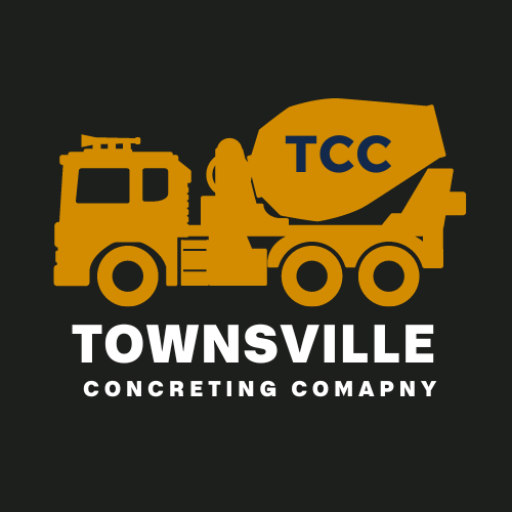Concrete Sealing: Townsville Guide
Why Seal Concrete?
Sealing protects concrete from Townsville’s harsh climate—intense sun, heavy rain, and humidity. It prevents damage, extends lifespan, and enhances appearance. This concrete sealing Townsville guide helps you choose the right sealer and apply it correctly. For more help on finding a contractor, you can read our guide on finding the right concrete contractor in Townsville.
Concrete Sealers
Penetrating Sealers
Penetrating sealers absorb into concrete, creating a barrier against water and other elements. They maintain the natural concrete look. Ideal for preserving the original aesthetic. What specific brands of penetrating sealers are recommended for different concrete types in Townsville’s climate? Are there specific performance differences or longevity expectations between brands?
Topical Sealers
Topical sealers form a surface layer, enhancing color and sheen. Excellent for decorative concrete like stamped patios. Available in various finishes, from matte to high-gloss. How do I choose the right sheen for my specific needs and aesthetic preferences? Are there specific topical sealers that offer better UV protection in Townsville’s intense sun?
Film-Forming Sealers
Film-forming sealers create a tough film, providing superior protection against heavy traffic, abrasion, and chemicals. Best for driveways and garages. What is the expected lifespan of a film-forming sealer in a high-traffic area? Are there different film-forming sealers for different levels of traffic (e.g., residential driveway vs. commercial parking lot)?
Choosing the Right Sealer
Driveways
DeepSeal 2500 offers durability and stain resistance. AquaGuard Pro protects against salt erosion in coastal areas. What if my driveway is exposed to both high traffic and salt erosion? Which product is best? Are there other options besides these two?
Patios
PatioShield 1000 protects against stains and weathering. ColourBoost 500 enhances color. If I want both stain protection and color enhancement, can I use both products, or is there a combined solution? How do these products hold up against mold and mildew growth, common in Townsville’s humid climate?
Pool Decks
SureGrip PoolDeck Sealer provides slip resistance and protects against UV rays and pool chemicals. How often should this sealer be reapplied, considering the constant exposure to water and chemicals? Are there eco-friendly options available for pool decks?
Interior Concrete
DuraShine Interior Sealer offers a tough, stain-resistant, easy-to-clean finish. What types of interior concrete applications is this sealer best suited for (e.g., floors, countertops)? Is it VOC-compliant for indoor use?

Sealing Concrete: Step-by-Step
- Clean: Use a pH-neutral cleaner like Simple Green and a stiff nylon brush. Remove dirt, grime, and mildew. For oil stains, use a degreaser like Oil Eater. This ensures a clean surface for the sealer to adhere to. What if the concrete has previously been sealed? What’s the best method for removing the old sealer before applying a new one?
- Repair: Patch cracks with a concrete patching compound like Sakrete Concrete Patch. Follow product instructions. Repairing cracks prevents further damage and ensures a smooth, even surface. What if the cracks are large or deep? Is patching sufficient, or is more extensive repair needed?
- Dry: Ensure concrete is completely dry. Use a moisture meter; readings should be below 10%. In Townsville’s humidity, this can take several days. Proper drying is crucial for preventing sealer failure. What are some tips for accelerating the drying process in a humid environment? How can I accurately measure moisture levels without a moisture meter?
- Apply Sealer:
- Roller: Use a 3/8″ nap roller for smooth surfaces, 1/2″ for textured. Apply thin, even coats, maintaining a wet edge. Using the correct roller ensures even application and prevents streaks. What causes roller marks or streaks, and how can I avoid them?
- Sprayer: Use a low-pressure sprayer with a fan tip. Apply in a sweeping motion, overlapping slightly. Spraying can be a faster method for large areas. What type of sprayer is recommended (pump, airless, etc.)? What’s the ideal nozzle size and pressure setting?
- Brush: Use a natural bristle brush for edges and intricate areas. Brushes are ideal for detail work and hard-to-reach spots. What are the advantages and disadvantages of using a brush versus a roller or sprayer?
- Dry: Allow 24-48 hours for drying, depending on humidity and temperature. Adequate drying time is essential for achieving the sealer’s full protective properties. What factors can affect drying time, and how can I tell if the sealer is completely dry?
Maintaining Sealed Concrete
Clean regularly with a mild detergent and water. Avoid harsh chemicals. Regular cleaning helps maintain the sealer’s appearance and prolong its lifespan. Which specific detergents are recommended? Are there any cleaning solutions to avoid?
Resealing
- Driveways: Every 2-3 years.
- Patios: Every 3-5 years.
- Pool Decks: Every 1-2 years.
Signs you need to reseal: fading color, stains, worn appearance, water no longer beads. How can I prolong the time between resealing applications?
Troubleshooting
- Bubbling/Peeling: Trapped moisture or improper surface preparation. Addressing these issues promptly prevents further damage. Remove the sealer, dry completely, and reapply. What are the best methods for removing bubbling or peeling sealer?
- Discoloration: Wrong sealer type or uneven application. Use a concrete cleaner for sealed surfaces. Which concrete cleaners are safe for use on sealed surfaces without causing damage or discoloration?
- White Haze: Moisture trapped during application. Apply a solvent-based sealer remover. Using the correct remover ensures effective haze removal without damaging the sealer. Are there alternative methods for removing white haze besides solvent-based removers?
DIY vs. Professional
DIY can save money, but requires proper technique. Professionals ensure a flawless, long-lasting finish. Consider your skills and project complexity. What are the potential costs associated with DIY vs. professional sealing? What are some common mistakes DIYers make, and how can they be avoided?
Finding a Contractor
Look for experience, licensing, and insurance. Check online reviews and ask for references. Choosing a qualified contractor ensures a professional and reliable result. What specific questions should I ask potential contractors? Are there any red flags to watch out for?



